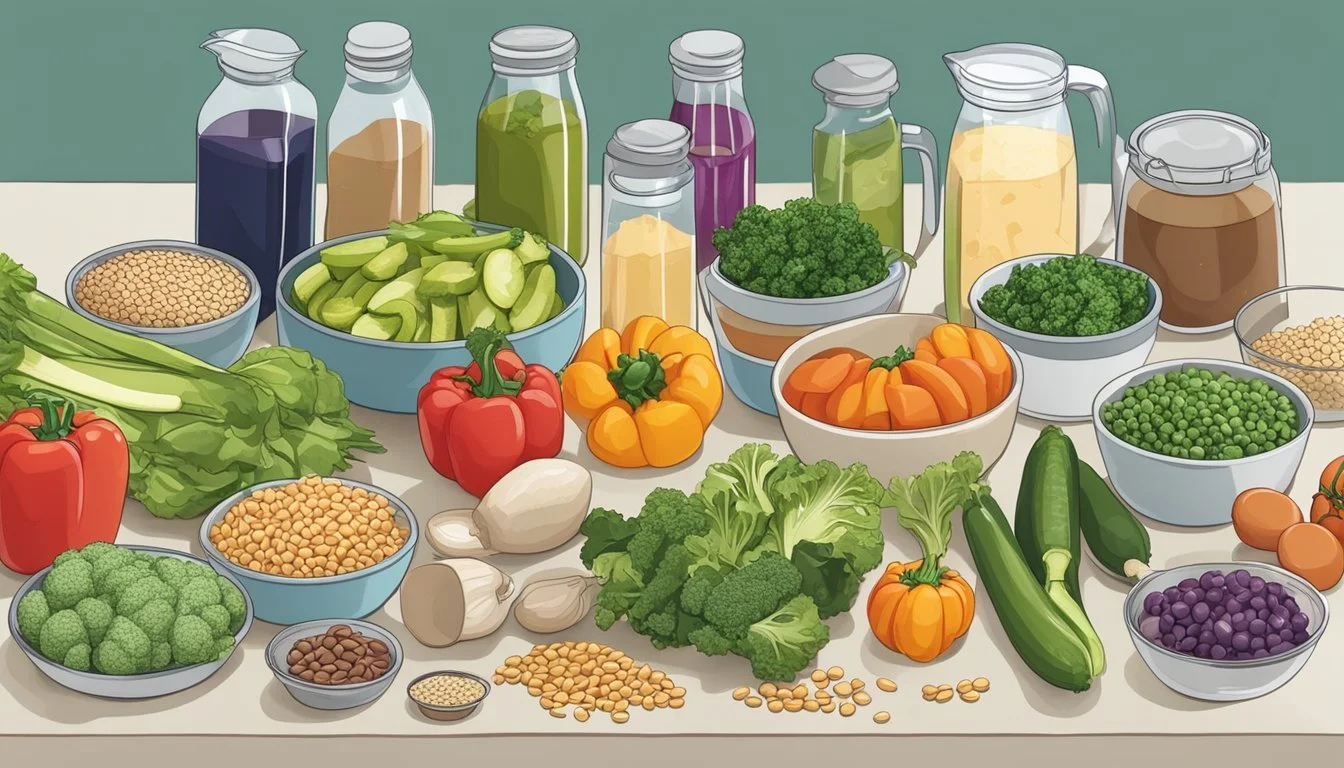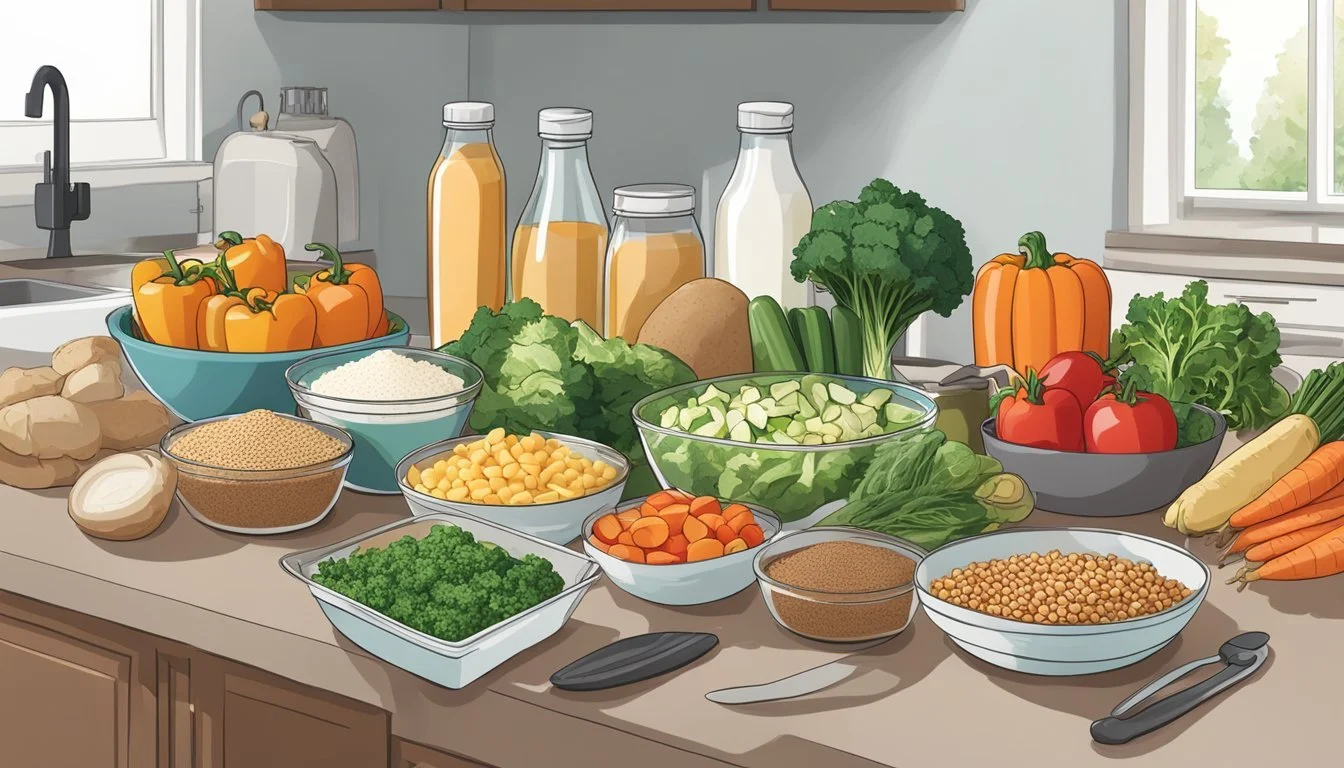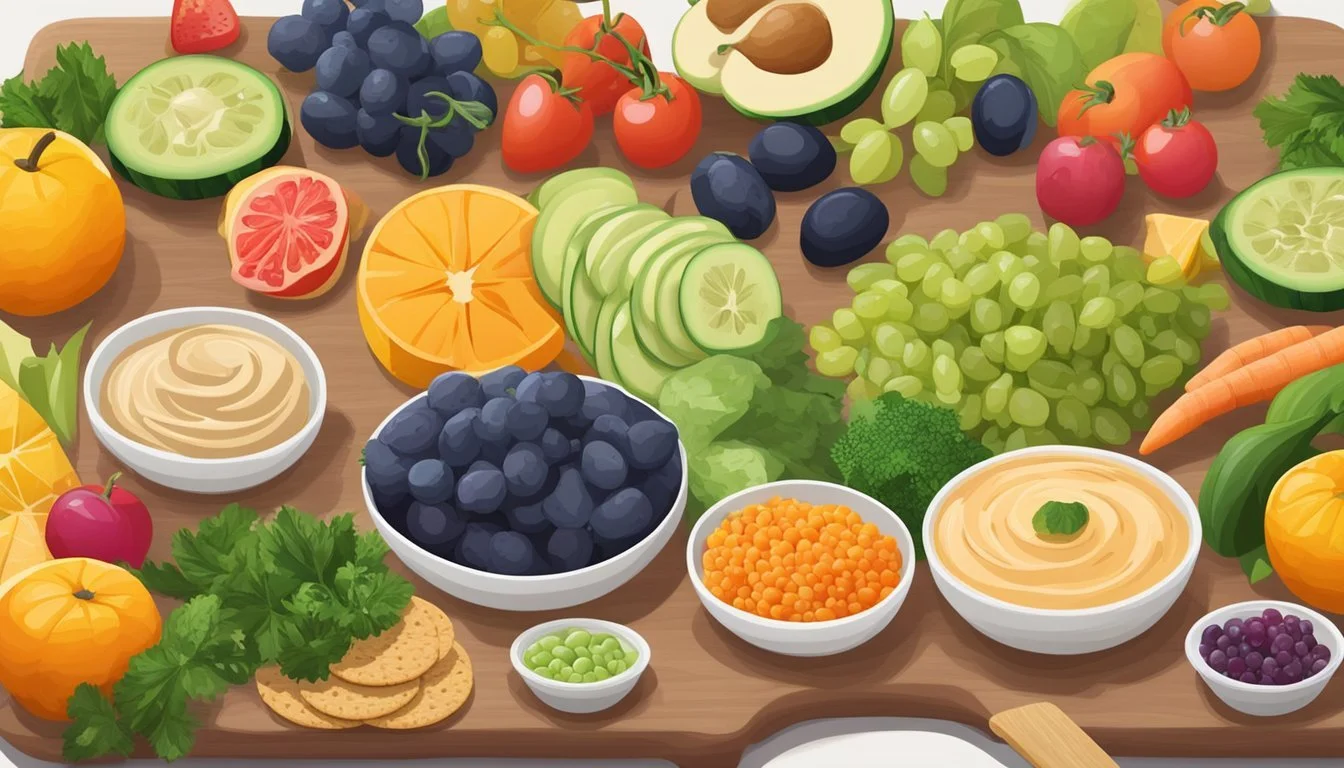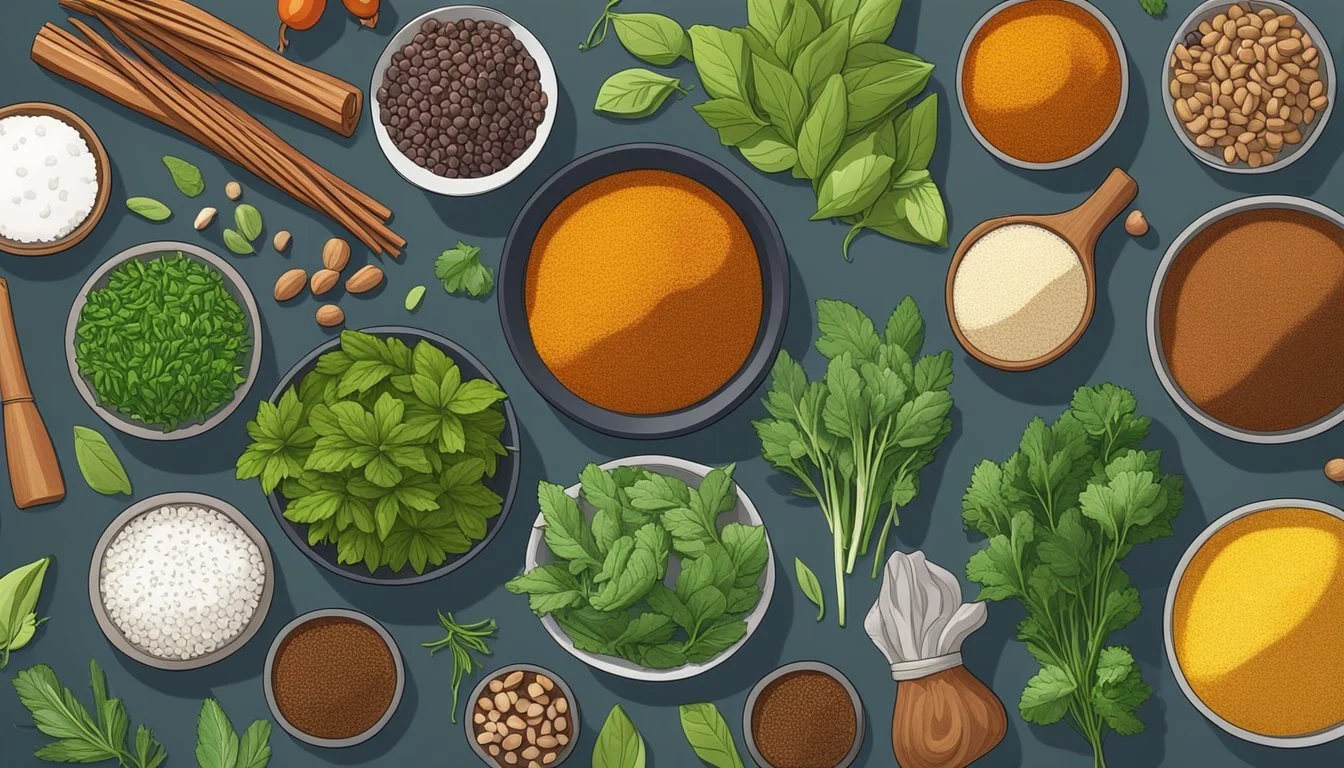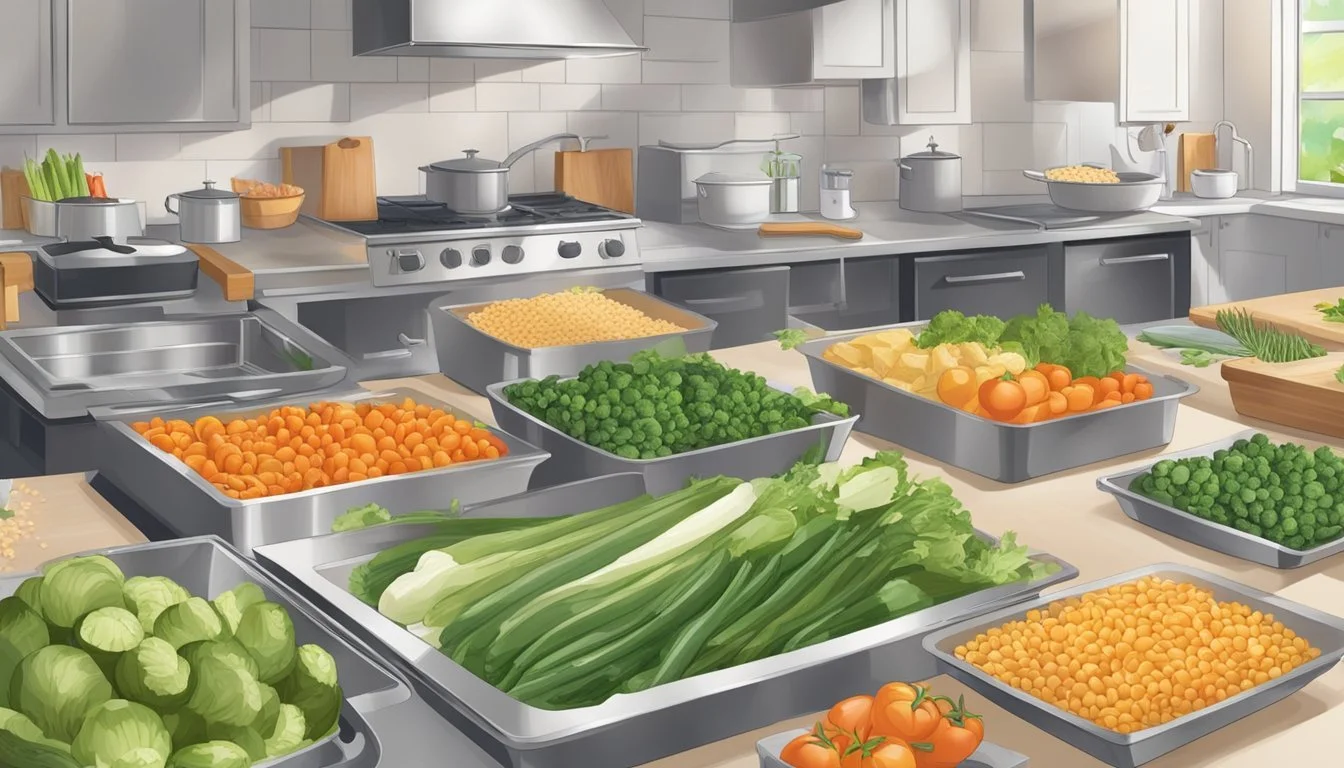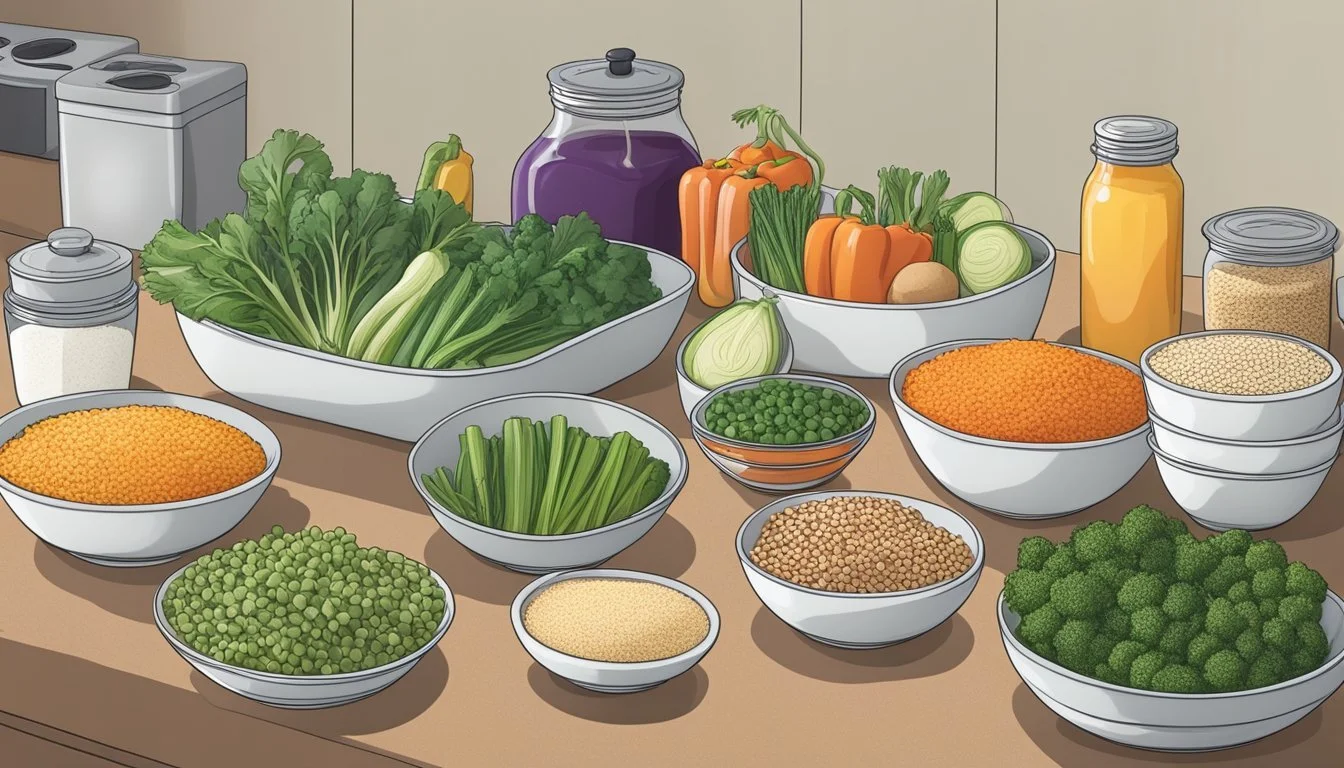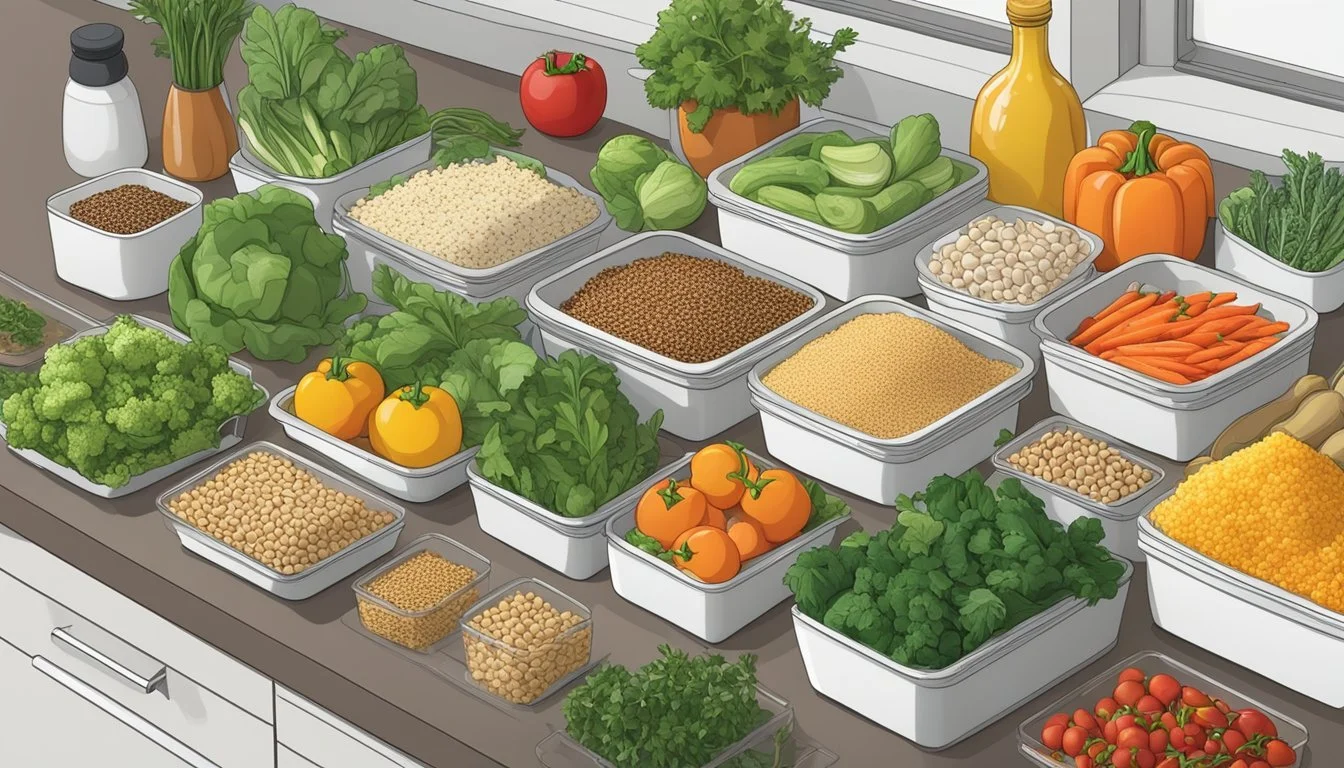What Are Some Easy Meal Prep Ideas for a Hypertension-Friendly Diet
Simple Steps for Healthier Eating
Maintaining a diet that supports heart health and manages hypertension is a key strategy in lowering and controlling high blood pressure. An effective diet for hypertension often emphasizes fruits, vegetables, whole grains, and lean proteins, while being low in sodium, saturated fats, and added sugars. These nutrition principles guide the creation of meal prep ideas that not only cater to individuals with high blood pressure but also contribute to overall cardiovascular health.
Meal prep can simplify the task of adhering to a hypertension-friendly diet by allowing individuals to plan and prepare meals that meet the necessary nutritional guidelines ahead of time. Preparing heart-healthy dishes in advance ensures that meals are balanced, portion-controlled, and free from excessive sodium, which is often found in processed and fast foods. Moreover, incorporating potassium-rich foods, such as spinach and other leafy greens, can help balance sodium levels in the bloodstream and promote a healthier blood pressure.
Strategies for meal preparation could include grilling or baking fish high in omega-3 fatty acids, such as salmon, and pairing it with a side of mixed vegetables for a boost of fiber and essential nutrients. Utilizing herbs and spices instead of salt can also enhance flavor while contributing to lower sodium intake. By focusing on these simple techniques, individuals can create varied and enjoyable meals that align with their dietary goals and support the management of hypertension.
Understanding Hypertension and Nutrition
Managing hypertension involves various strategies, and diet plays a critical role. Proper nutrition is key to regulating blood pressure and preventing the risk of heart disease.
Role of Diet in Hypertension Management
Diet has a significant impact on the management of hypertension. A well-planned diet can help lower high blood pressure and reduce the risk of complications such as heart disease. The focus is often on reducing sodium intake, as high amounts can cause the body to retain water, leading to increased blood pressure. Including plenty of fruits, vegetables, and whole grains can introduce beneficial nutrients that aid in blood pressure regulation. Limiting saturated fats and total fats is also recommended to manage hypertension effectively.
Key Nutrients for Blood Pressure Regulation
Certain nutrients have been identified as particularly beneficial in the regulation of blood pressure:
Potassium: This mineral helps to mitigate the effects of sodium and ease tension in the blood vessel walls. Foods rich in potassium include bananas, oranges, spinach, and potatoes.
Magnesium: Magnesium plays a role in blood pressure regulation by promoting the relaxation of blood vessels. Sources of magnesium include nuts, seeds, legumes, and leafy greens.
Fiber: Fiber, especially soluble fiber, can help lower blood pressure by improving cholesterol levels and supporting heart health. Oats, barley, beans, and lentils are good fiber sources.
Protein: Adequate protein intake is important for overall health and can contribute to lowering blood pressure. Lean meat, poultry, fish, and plant-based proteins are essential components of a hypertension-friendly diet.
Limiting intake of foods high in sodium and increasing consumption of nutrients that aid in lowering blood pressure are central to nutritional strategies for managing hypertension.
Fundamentals of Meal Prepping
When focusing on a hypertension-friendly diet, meal prepping can simplify the process of maintaining a balanced diet. Here, key strategies and benefits of meal prepping will ensure that one can easily adhere to dietary guidelines that support healthy blood pressure levels.
Benefits of Meal Prepping
Meal prepping offers several advantages, especially for those managing hypertension. Consistency in diet is crucial, and meal prepping ensures that heart-healthy foods are always on hand. By preparing meals in advance, individuals can control the sodium and nutrient content, critical factors for a blood pressure-friendly diet. Efficient use of time is another benefit, as meal prepping often involves cooking in bulk, which saves time during a busy week. It also reduces the temptation to choose less healthy options when hunger strikes unexpectedly.
Meal Prepping Strategies
A successful meal prep strategy begins with planning. Individuals should:
Plan meals that span breakfast, lunch (What wine goes well with lunch?), and dinner, ensuring each contains components like whole grains, lean proteins, and plenty of fruits and vegetables.
Consider variety to prevent boredom and promote a range of nutrients; for instance, aiming for a mix of leafy greens, colorful veggies, and various protein sources throughout the week.
Next, the preparation involves:
Cooking in bulk where feasible, like making a large batch of quinoa or brown rice that can be the base for multiple meals.
Using simple cooking methods such as sheet pan dinners or one-pot meals can cut down on prep time without sacrificing nutrition.
Storing meals is essential, and individuals should:
Use airtight containers to separate portions and keep meals fresh.
Familiarize themselves with how long certain prepped foods can be kept in the refrigerator or freezer for optimal freshness.
When it comes to execution:
Dedicating certain days for meal prepping, such as Sunday afternoon, can establish a routine that's easy to follow.
Preparing ingredients for simple, quick meals, such as overnight oats for breakfast or salads for lunch, can be extremely efficient for those with high blood pressure, as it guarantees controlled portions and nutrient content.
By adopting these strategies, individuals can make meal prepping a foundational part of their diet, contributing to better blood pressure control.
Breakfast Ideas
When constructing a hypertension-friendly breakfast menu, it's key to incorporate low-sodium, high-potassium, and high-fiber options. These meals support a balanced diet and help manage blood pressure.
Oatmeal and Whole Grains
Oats and whole grains serve as a stellar start to the day. One can prepare overnight oats with a base of old-fashioned rolled oats, chia seeds, Greek yogurt and unsweetened almond milk. To augment the health benefits and flavor, they may add sliced bananas and a handful of berries, which are rich in potassium and antioxidants. Another option is a warm bowl of oatmeal topped with almonds for added crunch and beneficial fats.
Egg-Based Meals
Eggs are a robust source of protein and can be a part of a blood pressure-friendly breakfast. An egg white scramble or an omelette with spinach demonstrates an uncomplicated way to include vegetables high in magnesium and calcium. To further reduce sodium intake, one should avoid adding salt and instead enhance the dish with herbs and spices.
Fruit and Yogurt Parfaits
Creating parfaits with low-fat Greek yogurt is a refreshing and healthy choice for breakfast. This dish becomes even more beneficial when layered with fruits like bananas and berries, both known to be high in fiber and vital nutrients that support heart health. Additionally, a sprinkling of nuts like almonds can introduce texture along with heart-healthy monounsaturated fats.
Lunch Options
For those managing high blood pressure, lunch options should emphasize vegetables, lean proteins, and whole grains. These ingredients provide essential nutrients without excessive sodium.
Salads and Bowls
Salads are a perfect vehicle for integrating a variety of vegetables and lean proteins into a hypertension-friendly diet. A simple yet nutritious salad could include:
Spinach and kale: leafy greens high in potassium and magnesium.
Tomatoes, carrot, and cucumber: rich in vitamins and low in calories.
Grilled chicken or tuna: for a boost of lean protein.
Beans or lentils: offer both protein and fiber, which can aid in maintaining a healthy blood pressure.
For a grain bowl packed with fiber and protein, one could combine:
Quinoa: a gluten-free grain that is high in protein.
Legumes: like chickpeas or black beans, add texture and nutrients.
Mixed greens and vegetables: for a variety of flavors and vitamins.
Wraps and Sandwiches
Wraps and sandwiches provide convenient and versatile lunch options. They should be made with:
Whole grain tortillas or bread: to add fiber without the added salt.
Lean protein sources like turkey breast, which is low in fat.
A bounty of vegetables like spinach, cucumber, and bell peppers for added nutrients and crunch.
To keep sodium levels in check, one can skip processed condiments and cheeses, opting for mashed avocado or hummus as flavorful, healthier spreads.
Homemade Soups
Soups are excellent for meal prepping as they can be made in large batches and stored for convenience. Key components of a heart-healthy soup include:
Broth-based soups, as opposed to cream-based, to cut down on fat.
A plethora of vegetables such as kale, carrots, and tomatoes.
Proteins like chicken or legumes, which offer essential nutrients without high amounts of sodium.
Herbs and spices can be used in place of salt to impart flavor, making these soups both delicious and suitable for a hypertension-friendly diet.
Dinner Recipes
Creating hypertension-friendly dinners involves focusing on meals rich in vegetables, lean proteins such as fish and poultry, and cooking methods that retain nutrients without adding excess sodium or unhealthy fats. Here are some curated dinner recipe ideas that cater to those needs.
Lean Protein Dishes
Lean proteins are essential in a hypertension-friendly diet. A well-prepared piece of chicken or fish, like salmon, provides necessary nutrients without the added fats that can negatively impact blood pressure. One might consider:
Grilled chicken breast with a side of steamed asparagus
Baked salmon fillets, seasoned with herbs and a squeeze of lemon
Recipes to try:
Herb-Crusted Chicken: Season chicken breasts with salt-free herb mixes and bake until fully cooked.
Lemon Garlic Salmon: Marinate salmon fillets in lemon juice and minced garlic before baking.
Stir-Fries and Sautés
Stir-frying and sautéing are quick methods that can help retain the color, crunch, and nutrients of vegetables like bell peppers and sweet potatoes. These methods use minimal oil and can be done with a variety of lean protein choices.
Sautéed bell peppers and onions with strips of lean pork
Stir-fried tofu with an assortment of colorful veggies served over brown rice
Recipes to try:
Pork and Pepper Stir-Fry: Cook lean pork strips with sliced bell peppers in a small amount of olive oil and low-sodium soy sauce.
Tofu Veggie Sauté: Combine firm tofu and mixed vegetables in a pan with a dash of salt-free seasoning.
Baked and Roasted Meals
Roasting and baking are cooking methods that can enhance the natural flavors of foods without the need for added sodium or heavy sauces. When preparing dinners, one might opt for:
Roasted chicken with a medley of root vegetables including carrots and sweet potatoes
Baked fish alongside a serving of roasted potatoes and asparagus
Recipes to try:
Garlic Roasted Chicken and Veggies: Season a whole chicken with garlic and herbs, and surround it with diced sweet potatoes and carrots to roast together.
Roasted Salmon and Asparagus: Place salmon fillets on a tray with fresh asparagus, lightly coat with olive oil, and roast until tender.
Healthy Snacks and Sides
A hypertension-friendly diet often includes snacks and sides that are low in sodium and rich in nutrients that can help lower blood pressure. A focus on vegetables, nuts, seeds, and heart-healthy spreads can make snack time both delicious and beneficial for blood pressure management.
Vegetable-Based Snacks
Vegetables are foundational to a hypertension-friendly diet. They are low in calories, high in fiber, and can help reduce blood pressure.
Stuffed Celery: Fill celery sticks with a small amount of almond or cashew butter, topped with raisins for a crunchy and satisfying snack.
Veggie Chips: Slice vegetables like beets and carrots thinly, roast them with a light spray of olive oil until crispy for a nutrient-packed alternative to potato chips.
Nuts and Seeds
Nuts and seeds are excellent sources of magnesium and potassium, which are key minerals for controlling blood pressure.
Almonds and Pistachios: A small handful of unsalted almonds or pistachios can provide heart-healthy fats and fiber. Be mindful of portion sizes to avoid excess calorie intake.
Pumpkin and Sunflower Seeds: These seeds are beneficial for their magnesium content. Eating them plain, roasted, or in salads adds a nutritious crunch.
Healthy Dips and Spreads
Dips and spreads can be flavorful components of snacks while also offering health benefits, as long as they are prepared with the right ingredients.
Avocado Dip: Mash avocado with lemon juice, garlic, and diced tomatoes for a potassium-rich guacamole that pairs well with raw veggies.
Hummus: Homemade hummus made from chickpeas, a bit of tahini, lemon juice, and garlic can serve as a protein-rich dip or spread that's low in fat and high in fiber.
Seasonings and Flavorings
Proper seasoning is crucial in a hypertension-friendly diet. It emphasizes the use of various herbs, spices, and low-sodium alternatives to enhance flavor without relying on salt, which can exacerbate high blood pressure.
Herbs and Spices
Individuals managing hypertension can freely incorporate a variety of herbs and spices for seasoning while avoiding the health risks associated with excessive salt intake. Basil and cinnamon can infuse dishes with distinctive flavors, both sweet and savory. Garlic offers a pungent kick and can be beneficial for heart health, while black pepper serves as a universal spice that delivers mild heat.
Basil: Add to salads, soups, and pasta.
Cinnamon: Can be sprinkled on oatmeal or used in baking.
Garlic: Use in marinades, dressings, and stir-fries.
Black Pepper: A versatile spice suitable for most dishes.
Healthy Fats
Healthy fats, like those found in olive oil, can serve as carriers for flavors and are vital for the absorption of certain nutrients. Olive oil can be used as a base for salad dressings or as a healthier alternative to butter for cooking. A drizzle of balsamic vinaigrette can also enrich meals with a complex, tangy flavor profile.
Olive Oil: Substitute for butter or other saturated fats.
Balsamic Vinaigrette: Ideal for glazing vegetables or enhancing salads.
Low-Sodium Alternatives
Replacing salt with low-sodium alternatives is essential for maintaining a heart-healthy diet. Lemon juice can offer a fresh, tangy taste that brings out the natural flavors of food, and can be a satisfying substitute for salt. Introducing a wide variety of seasonings can reduce one's reliance on salt without compromising taste.
Lemon Juice: Squeeze over cooked dishes or into water for a refreshing twist.
Herbs and Spices: Explore different combinations to find pleasing flavors that make up for less salt.
Special Considerations
Crafting meal plans for individuals with hypertension requires mindful consideration of dietary needs and restrictions. One must balance nutrient-dense foods with flavor while adhering to health guidelines.
Dietary Restrictions and Preferences
Individuals may have specific dietary restrictions such as vegetarianism or may be managing conditions like diabetes. For vegetarians, meal prep ideas can include plant-based protein sources such as lentils, chickpeas, and tofu, which are also beneficial for blood pressure management. Those with diabetes should focus on meals that have a low glycemic index to maintain blood sugar levels, incorporating whole grains and plenty of vegetables.
Managing Salt and Added Sugars
Salt: A diet high in salt can exacerbate hypertension. It is crucial to limit salt intake by choosing herbs and spices for flavoring instead of salt. Preparing homemade meals allows for control over the amount of salt used.
Added Sugars: Foods high in added sugars should be avoided. Opt for natural sweeteners like fruit, or small amounts of honey or maple syrup.
When to Consult a Doctor or Nutritionist
Individuals must consult healthcare professionals when beginning a new dietary regimen, especially when managing high blood pressure or related conditions. A doctor or nutritionist can provide personalized advice that considers medical history and nutritional needs, ensuring that meal preparations are safe and effective for health management.
Planning and Shopping
When preparing meals that support a healthy blood pressure, the right planning and shopping are crucial. The focus is on selecting whole, nutrient-rich foods that conform to a hypertension-friendly diet.
Creating a Hypertension-Friendly Shopping List
To ensure dietary choices align with hypertension management, the shopping list should predominantly feature fresh vegetables and fruits, lean proteins, and fiber-rich legumes and whole grains. It's advisable to list specifics such as:
Vegetables/Fruits: Spinach, berries, oranges.
Legumes: Lentils, chickpeas, black beans.
Whole grains: Oats, brown rice, quinoa.
Lean Proteins: Skinless poultry, fish.
Nuts/Seeds: Almonds, walnuts, flaxseeds.
Choosing the Right Produce
Produce high in potassium and low in sodium is key for a hypertension-friendly diet, aiding in the maintenance of a healthy blood pressure. Shoppers should opt for:
Green leafy vegetables: They're high in minerals and low in calories.
Berries: Rich in antioxidants and fiber. When selecting produce, freshness and variety ensure a wide range of nutrients are consumed.
Pantry Staples for Healthy Eating
A well-stocked pantry plays a pivotal role in adhering to a hypertension diet. Key staples include:
Legumes: Such as black beans and lentils, offer protein and fiber without added sodium.
Whole Grains: Choose products like whole wheat pasta and brown rice for their blood pressure-supporting benefits.
Nuts and Seeds: A small handful of unsalted nuts like almonds can provide healthy fats and are a convenient snack.
Incorporating a mix of these pantry items can help create flavorful, balanced meals while adhering to a hypertension-friendly eating plan.
Integrating with Lifestyle
Adopting a hypertension-friendly diet is more than just a series of meal choices; it's about integrating nutritious eating habits into one's daily routine while syncing with exercise and time management strategies for long-term success.
Balancing Diet and Exercise
Individuals should aim to establish a consistent exercise regimen that complements their meal plan. Regular physical activity can enhance cardiovascular health and aid in managing blood pressure levels. They may consider moderate-intensity exercises such as brisk walking, cycling, or swimming for at least 150 minutes per week, as these can be particularly effective.
Meal Prep and Time Management
Efficient meal prep is crucial for adhering to a heart-healthy diet amidst a busy lifestyle. It involves planning and preparing meals in advance, often for the week ahead, which can save time and reduce stress. By dedicating a few hours to meal prep, one can ensure that nutritious, low-sodium meals are readily available, which helps to avoid last-minute reliance on less healthy comfort food options.
Time-saving tips:
Batch cook: Make large portions of recipes that keep well, such as stews and salads.
Chop vegetables ahead: Store them in the fridge for quick use throughout the week.
Use healthy shortcuts: Canned beans, pre-cut vegetables, and frozen produce can be time-savers.
Long-Term Dietary Habits
Cultivating long-term dietary habits is key to managing hypertension effectively. This means consistently selecting foods that support blood pressure management, such as fruits, vegetables, lean proteins, and whole grains, while minimizing the intake of high-sodium and high-fat foods. Comfort foods can be modified to be healthier and included as part of a balanced diet, ensuring one does not feel deprived, which may facilitate longer adherence to a heart-healthy lifestyle.
Conclusion
Meal prepping for a hypertension-friendly diet requires mindfulness about nutrition and a balance of heart-healthy foods. Individuals can manage their blood pressure effectively by incorporating a variety of fruits, vegetables, whole grains, and lean proteins into their diet. Weekly meal plans should prioritize low-sodium options to keep in line with doctor recommendations for managing hypertension.
Key Components of Hypertension-Friendly Meal Prep:
Fruits and Vegetables: Rich in potassium, helping to lower blood pressure levels.
Whole Grains: A source of dietary fiber supporting heart health.
Lean Proteins: Includes fish, poultry, and plant-based proteins beneficial for blood pressure.
Making smart food choices translates into long-term health benefits and can be an adjunct to regular exercise. However, it is essential to consult a healthcare professional or a nutritionist to tailor a diet that best fits one's individual health needs.
Regular meal prep is a sustainable approach to ensure one has access to nutritious meals throughout the week, leading to better control over hypertension. It allows individuals to anticipate their dietary requirements and adjust portions and ingredients accordingly. By committing to a diet that supports blood pressure management, individuals take an active role in maintaining their well-being and contributing positively to their overall health trajectory.



